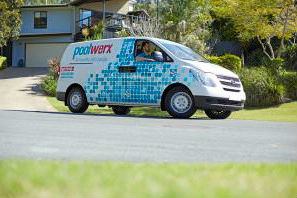For 20 years, Elite Pools & Spas has built and maintained pools and spas around Houston. The company grew its business using traditional marketing techniques such as face-to-face meetings and word-of-mouth referrals. It had a Website, but “it wasn’t user-friendly and it wasn’t delivering the results it should,” says owner Jamie Knuth.
With the economy turning sluggish and competition becoming fierce, Knuth reluctantly conceded that she had to adjust her marketing strategy with a new focus on the Internet. In late 2010, she hired a digital marketing agency to give ElitePoolsofHouston.com a total overhaul. The result is a content-heavy site that is fully integrated with social media, all designed to boost Elite’s search-engine rankings.
“If you get your Website done right and working to your advantage, it makes a huge difference,” Knuth says. “And now I see that.”
The greatest reward of the new site, Knuth says, is that it levels the playing field between Elite and bigger companies. Knuth and her husband build fewer than 50 pools a year and work from home, so they have no storefront on the highway to draw attention. But they are a full-service operation, and their new Website communicates that.
“Now people know that we don’t just clean pools, we build them,” Knuth says. “It is easy to find and [is] filled with good information, and that makes us seem bigger than we are.”
Elite’s story illustrates the current trend toward Internet-based marketing that utilizes multiple channels — from blogs and video to user-generated content and online referral sites — to communicate a specific message to targeted users.
“It’s not just about a Website anymore, it’s your total Web presence that matters,” says Pam Vinje, CEO of ThePool Marketing Site, the agency that helped Elite Pools.
Define the program
You’re sold on the idea of updating your marketing campaign and champing at the bit to start making big changes. Resist that urge. While it is tempting to jump right in to execution mode, a key to your eventual success is taking time to create a thoughtful plan.
First, what are your goals? Without defining your expectations, you may lack the direction needed to enact a plan. Elite’s mission was to make consumers aware of its high-end pool-building capabilities. Your goal could be rebranding or expanding into a new market or boosting sales of a particular product line.
Whatever it is, defining the objective helps determine the audience you will target (pool moms, for example, or a particular ZIP code or income bracket). And, that information will drive all future choices, from crafting a message to choosing distribution channels.
The next step is creating a message that addresses your goals. Start by coming up with a list of related keywords a person might enter into a search engine. Boosting your search-engine rankings is tough, so it helps to concentrate on just a few, specific terms. If you want to be known for high-end pools in a neighboring city, you might focus on terms such as “luxury pools in [city name]” and “custom pool designer in [city name].”
“You need a clear message about who you are,” says Marc Sabin, executive vice president of Marketing Works in Cold Spring, N.Y. “Then use that message consistently across all your marketing efforts online and offline.”
Content is king
A ton of informative, relevant content can propel a site to the top of Google; a total lack of it can land another site on page 10. Using your Website to sell, sell, sell will turn off customers and, possibly, search engines. Instead, the smart approach is to offer valuable content (that also just happens to include your keywords).
“The problem is this: Too many pool and spa companies are sending people to a static Website that is just a sales pitch,” says Marcus Sheridan, partner at River Pools & Spas in Warsaw, Va. “Your Website should teach people something and give them some value.”
Online content should start with blogs and useful tips. Use the blog as an educational tool to answer questions, give advice and make suggestions — anything that establishes your company as a trusted expert.
“Most of your Website will stay the same and your search-engine standing will go down if you don’t add new content,” Vinje says. “A blog adds fresh, relevant content on a regular basis, plus it can help with search keywords you are weak in.”
One of Vinje’s pool-business clients has focused his blog around the keywords “backyard living.” A recent post about outdoor kitchens caught the attention of a local radio host, who asked the owner to be a guest on his show.
Fuel the fire
Realistically, adding blog posts and photos on a Website isn’t enough to sell most products. It requires a comprehensive marketing plan, which means distributing your content across different online channels.
Your first step? Decide which social media outlets make sense for your goals (see “Social Media Explosion” for tips) and then encourage interaction by adding sharing buttons for each site on all of your content. Professional quality share buttons can be obtained for free from sites such as AddThis.com.
Every time you add new content to your site, change it slightly and then post it on the social sites you use. If you mention specific customers, ask them to share the information on their personal profiles as well.
“You want people to see your message as often as possible in as many environments as possible,” says Kevin Woodhurst, general manager at Dolphin Pools & Spas in Phoenix. “All of these sites will remain separate unless you make an effort to tie them together. If I post in one place, I always link it to the other sites in some fashion.”
Measure success
A blog post here, cool photos there — none of it matters if you don’t know what’s delivering results. Measuring the effectiveness of your tactics allows you to make smart adjustments and focus resources on things that work. Luckily, there are solutions for making the review process easier.
Place unique QR codes on print ads that lead to a specific landing page that can be tracked. Or, use information-capture tools, such as a digital form that customers fill out to get more details. If a person requests more info, you will know that the content is doing its job.
To see how much buzz your efforts are generating, sign up for free e-mail alerts that will notify you when your company name appears in search results and on social media. Use Google Alerts to monitor basic Web search results and Social Mention for social media sites.
Finally, the most important tool is analytics, which can be done by a variety of programs, including Google Analytics and Hubspot. Learn who is coming to your Website, how often, how long they stay, which pages they view and more. Paid services can delve even deeper to give names, e-mails and interests for follow-up.
“I go nuts over analytics,” says Sheridan, who pays for a premium Hubspot program. “Because of analytics, I don’t believe in doing anything unless I can track what I get from it.”
However, before pulling the plug on content that’s not effective, make sure you’ve given it time to work. Building momentum online can be slow going, so be sure to judge results accordingly. Slow, measured improvements are all that should be expected.
“The biggest mistake companies make is doing something new and then quitting if they don’t see an impact on the bottom line after a few weeks or a couple of months,” Woodhurst says. “If you Google my name, there are 20 pages of results, but it has taken years.”



